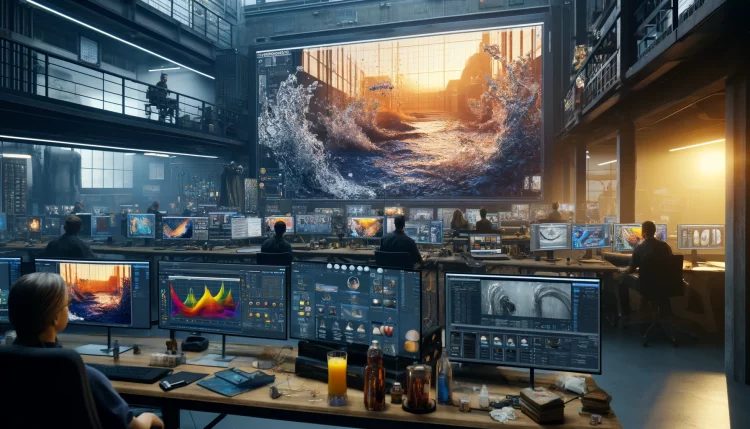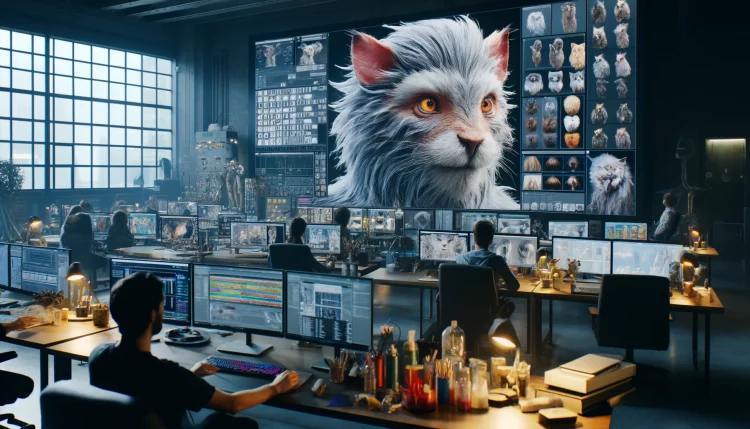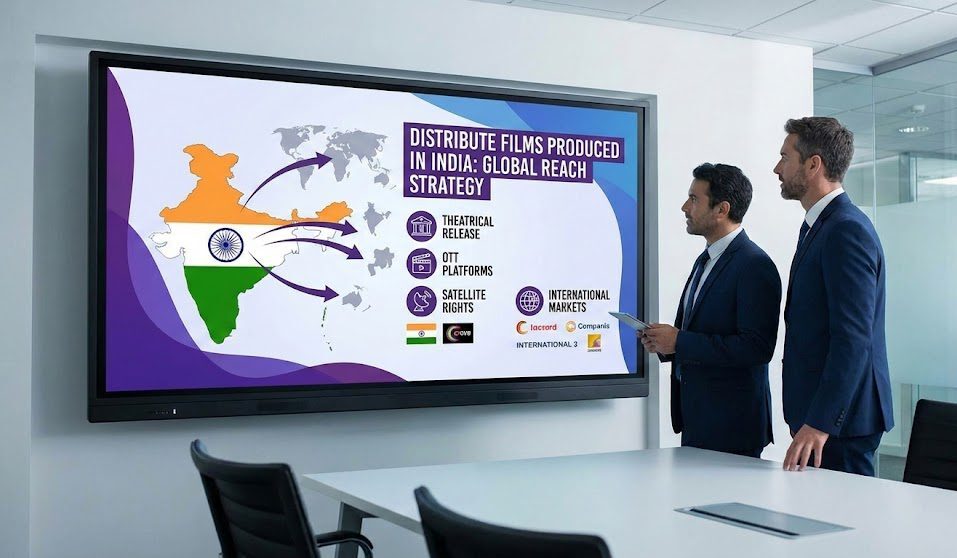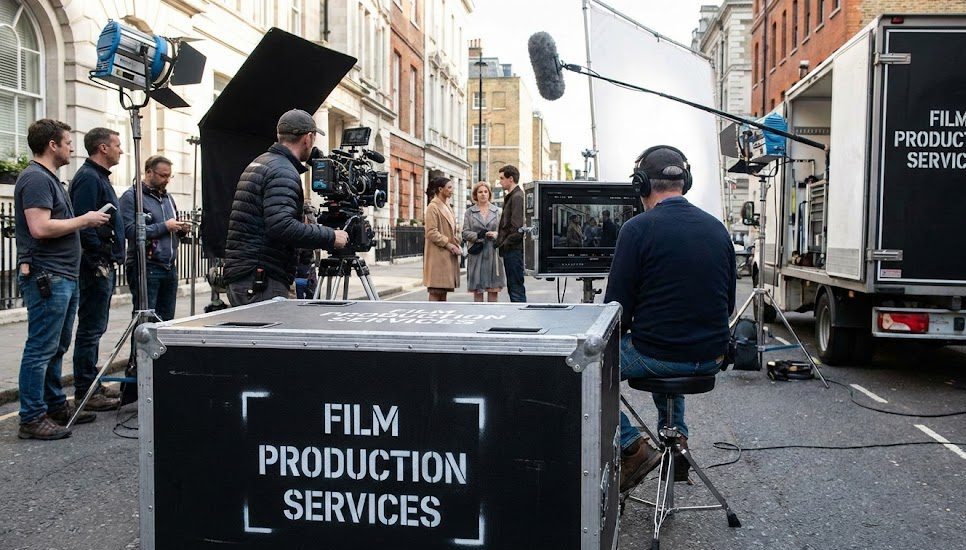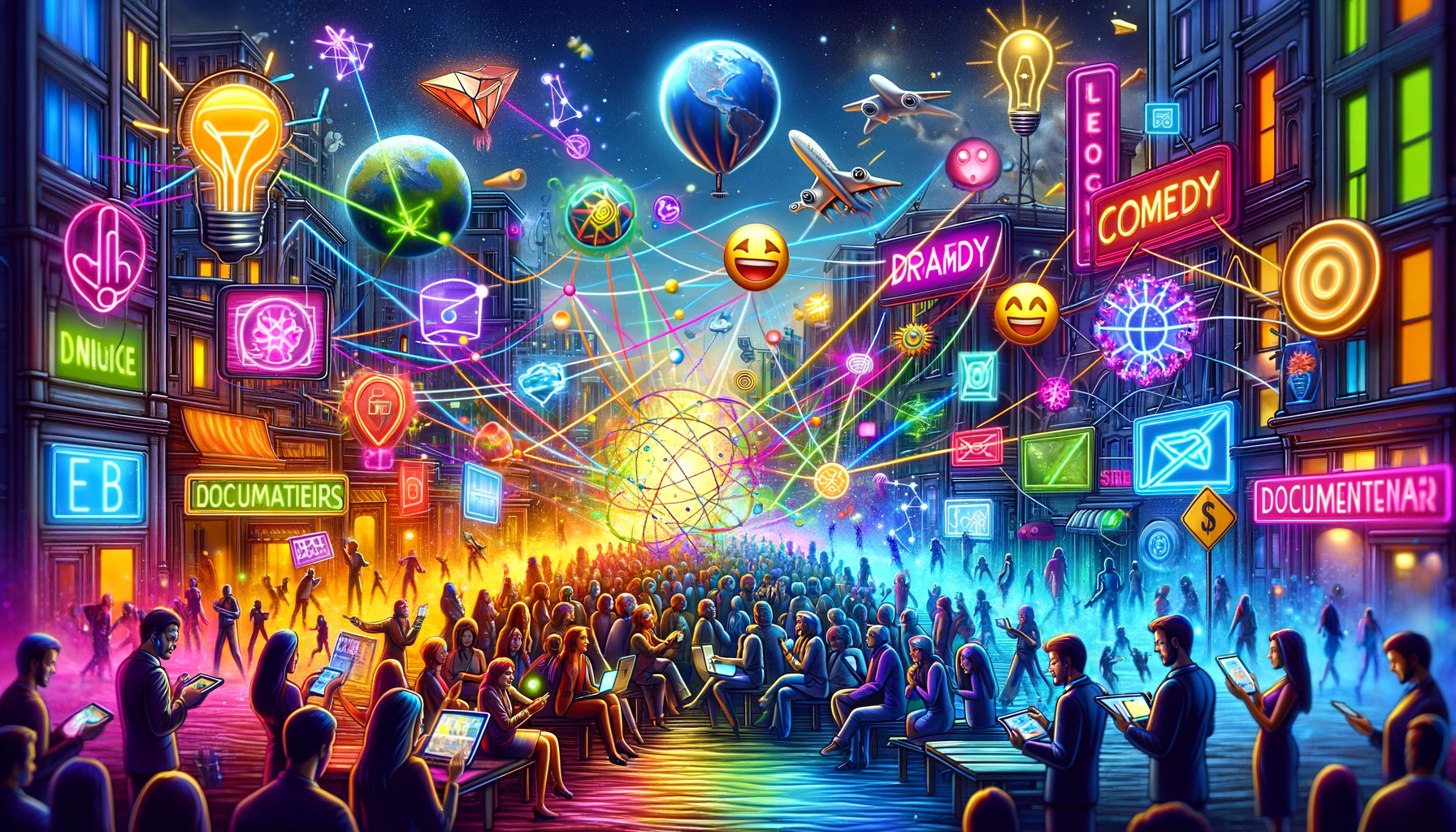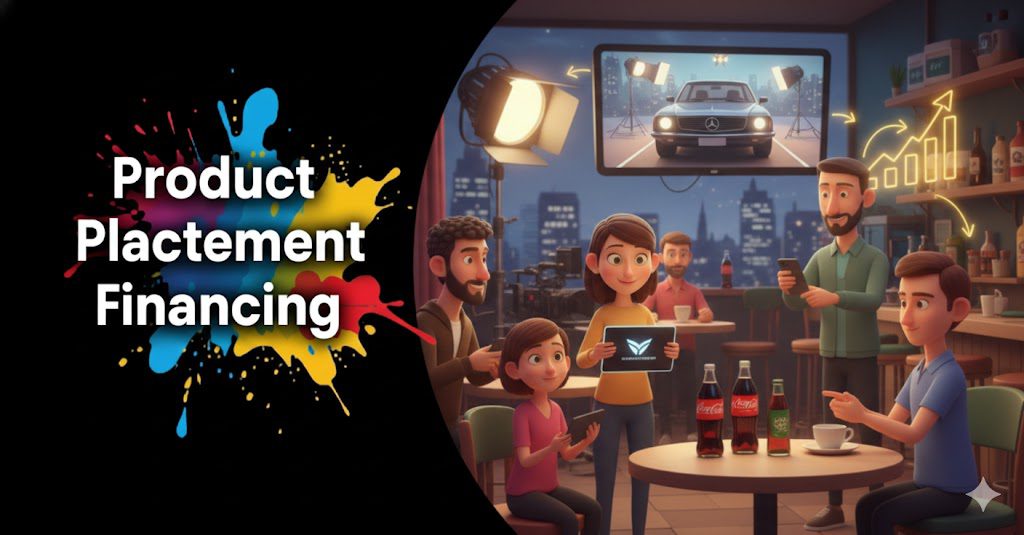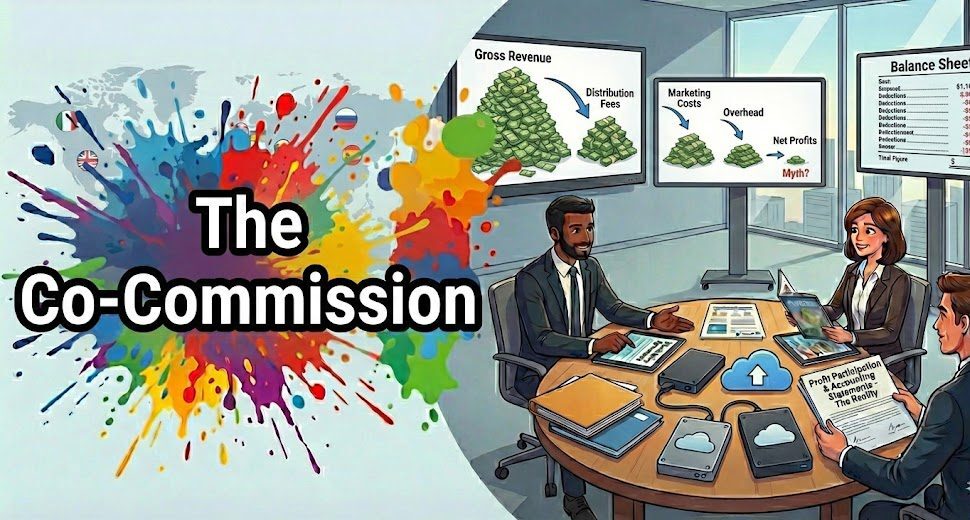Introduction
In the world of TV production, post-production is where the magic happens. It takes raw footage and turns it into the polished, binge-worthy shows we all love. Whether you’re a content buyer hunting for the next big hit or a post-production vendor looking to serve high-profile clients, understanding how post-production works can give you an edge in the market. In this article, we’ll dive into everything from the editing process to sound design and special effects, showing why post-production is a game changer.
If you’re part of the Vitrina Business Network (VBN), you’ll see how Vitrina can help connect you with top-tier services and talent.
Key Takeaways
| Key Concept | Takeaway |
| Importance of Post-Production | See why post-production is essential for high-quality TV shows. |
| Workflow & Tools | Discover key workflows, tools, and techniques involved in TV post-production. |
| Buyer & Seller Insights | Learn how buyers and sellers in the entertainment industry benefit from post-production services. |
| Challenges & Innovations | Understand the challenges of post-production and how innovations are reshaping it. |
| Vitrina’s Role | Explore how Vitrina connects buyers and sellers in post-production services. |
Table of content
- Introduction
- Understanding the Importance of Post-Production
- The Post-Production Workflow
- Editing and Visual Effects (VFX)
- Sound Design and Audio Post-Production
- Color Grading and Visual Enhancements
- Music and Titles
- Software and Tools in Post-Production
- Challenges and Management
- Innovations and Future Trends
- Key Takeaways
- FAQs
Looking for Reliable Post-Production Vendors?

Understanding the Importance of Post-Production
Post-production is not just the final step of creating a TV show—it’s where the story truly comes together. Buyers, like streaming platforms and TV networks, rely on a finished product that looks and sounds incredible. Sellers—service providers in editing, sound design, and visual effects (VFX)—play a key role in bringing the show to life. Without a strong post-production team, even the best shot footage will fail to captivate audiences.
| Aspect | Importance in TV Production |
| Editing | Ensures the flow and pacing of the story are tight and compelling. |
| VFX and CGI | Adds layers of visual depth, realism, or fantasy, depending on the genre. |
| Sound Design | Enhances the immersive experience by syncing sound and visuals perfectly. |
| Color Grading | Adds consistency and mood through advanced color correction. |
Sustainable Practices and Solutions in VFX Post-Production
What are the best eco-friendly practices for VFX post-production?
Several sustainable practices can be applied to reduce the environmental impact of VFX post-production. Studios can integrate green energy solutions, optimize workflows to reduce unnecessary renders, and minimize the use of physical resources through virtual production.
| Sustainable VFX Practice | Environmental Benefit |
| Virtual production | Reduces the need for physical sets and travel, lowering emissions. |
| Energy-efficient render farms | Decreases electricity consumption through better power management. |
| Cloud-based rendering | Shifts workload to energy-efficient data centers. |
Bullet Points: Eco-Friendly Solutions in VFX Post-Production
- Virtual sets reduce physical waste.
- Green data centers lower the carbon footprint.
- AI helps optimize workflows, cutting down unnecessary rendering.
Struggling with Your Post-Production Workflow?

The Post-Production Workflow
A smooth post-production workflow is critical for meeting deadlines and staying on budget. This process can involve dozens of people, from editors to sound designers and visual effects artists. Here’s a look at the main steps involved in creating a show after filming wraps:
- Editing: The foundation of post-production, where raw footage is cut and shaped.
- Visual Effects (VFX): CGI, animation, and green screen techniques enhance the visual storytelling.
- Sound Design: Sound mixing and design are critical for creating immersive audio experiences.
- Color Grading: Adjusts the color of the footage to ensure consistency and evoke specific emotions.
Vitrina offers access to a global network of post-production service providers. Whether you need specialized VFX or color grading experts, Vitrina helps you find the right fit. Check out their services to streamline your project workflow.
For tips on managing TV production budgets, visit Budgeting for TV Productions.
Editing and Visual Effects (VFX)
The editing process is where the storyline takes shape. Good editors understand how to piece together shots in a way that maintains pacing, emotion, and tension. After the editing process, visual effects (VFX) are layered on to add visual spectacle—whether that’s a breathtaking fantasy world or subtle CGI enhancements.
Top Considerations for Editing and VFX:
- Efficient Editing: Keep the story sharp and engaging while making room for visual effects.
- Visual Effects Impact: VFX can make or break a scene. Strong CGI and well-executed green screen work can elevate a show.
Want to dive deeper into how VFX transforms TV shows? Read about the Green Screen & Special Effects in TV.
Buy or Sell Post-Production Services Effortlessly

Sound Design and Audio Post-Production
Audio can be the difference between a good TV show and a great one. Sound design includes everything from dialogue editing to Foley work (everyday sound effects like footsteps). Without clean, precise sound work, a TV show feels incomplete.
Key Steps in Sound Design:
- Dialogue Editing: Cleaning up and enhancing the actors’ dialogue.
- Foley and ADR: Adding realistic sounds and re-recording dialogue when necessary.
- Sound Mixing & Mastering: Ensuring all audio levels are perfect for broadcast.
To explore more about the tech and gear involved, check out TV Production Equipment.
Color Grading and Visual Enhancements
Color grading takes the flat look of raw footage and transforms it into a visually stunning product. It can give a show its unique “look” and create a specific mood. Consistency in color is especially important when you’re cutting between multiple scenes shot in different lighting conditions.
Key Tools for Color Grading:
- Color Correction: Fixes any issues with exposure, lighting, and color balance.
- Color Grading: Applies a creative color scheme that enhances the emotional tone of a scene.
For a deeper understanding of how TV production techniques have evolved, read the Evolution of TV Production Techniques.
Music and Titles
Music is one of the most important emotional drivers in TV shows. It sets the tone, builds tension, and creates memorable moments. In addition to music, motion graphics for titles and credits give the show a professional polish. These elements are often created in post-production by specialized teams.
Key Considerations:
- Music Composition: Custom scores are composed to fit the tone of each scene.
- Music Licensing: Ensure the right licenses are acquired for any third-party music.
- Titles & Motion Graphics: These elements offer visual transitions and clarify important information for viewers.
Interested in how music composition works in TV? Vitrina can help connect you with music composition experts in the post-production phase.
Software and Tools in Post-Production
Every successful post-production team relies on industry-standard software. Whether it’s Avid Media Composer for editing, Pro Tools for audio work, or DaVinci Resolve for color grading, having the right software in place makes a world of difference.
| Tool | Purpose |
| Avid Media Composer | Industry-standard editing software. |
| Pro Tools | Top choice for sound mixing and design. |
| DaVinci Resolve | Preferred tool for color grading and correction. |
Vitrina helps you find post-production vendors with cutting-edge tools that meet industry standards. Get access to top-tier services through the Vitrina Business Network.
Challenges and Management
Managing a post-production timeline is no small feat, especially in the world of episodic TV. From tight deadlines to budget constraints, post-production can quickly become a bottleneck if not managed carefully.
Common Post-Production Challenges:
- Tight Deadlines: Post-production often overlaps with tight broadcast schedules, requiring fast turnarounds.
- Budget Management: Special effects and reshoots can drive up costs quickly.
By leveraging Vitrina’s network, producers can find post-production partners who are efficient and reliable, ensuring that tight deadlines are met without sacrificing quality.
For tips on managing timelines, visit TV vs. Film Production: Key Differences.
Innovations and Future Trends
Post-production is constantly evolving. From AI-driven editing tools to cloud-based collaboration, technology is reshaping how post-production teams work. Buyers benefit from faster, more cost-effective services, while sellers can use these innovations to offer enhanced value.
Top Innovations to Watch:
- AI in Editing: Artificial intelligence can now assist in cutting down footage faster and with more precision.
- Cloud-Based Collaboration: Teams across the globe can now work together in real-time thanks to cloud technology.
For a look at the latest trends, Vitrina offers strategic insights through their regular updates on TV production innovations.
Conclusion
Post-production is an essential phase that shapes the final quality of any TV show, bringing together elements like editing, sound design, visual effects, and color grading. Whether you’re a buyer looking to acquire polished content or a service provider offering cutting-edge post-production solutions, understanding and mastering these processes is crucial. Vitrina plays a pivotal role in connecting the right buyers and sellers, ensuring access to top-tier talent and services globally.
With innovations like AI-driven editing and cloud-based collaboration continuing to transform the industry, now is the time to leverage the expertise and connections Vitrina provides. By partnering with top professionals in post-production, you can elevate your TV show and stand out in the competitive entertainment landscape.
Start your journey today by exploring how Vitrina can help streamline your post-production process, ensuring your TV show reaches its full potential. Sign up for free and connect with the best post-production vendors in the industry!
Frequently Asked Questions
Sound design is crucial in creating an immersive viewing experience. It involves everything from dialogue editing to crafting Foley sounds. Through Vitrina, buyers can find top sound design specialists to ensure high-quality audio.
Managing a post-production budget is all about finding cost-effective solutions without sacrificing quality. You can find budget-conscious post-production teams on Vitrina’s platform.
Common tools include Avid Media Composer for editing, Pro Tools for audio, and DaVinci Resolve for color grading. Vitrina helps connect producers with teams that specialize in these tools.
Color grading adds depth, mood, and consistency to the visual storytelling of a TV show. Vitrina can help you find experts in color grading who can bring your vision to life.
VFX helps create dynamic, visually stunning moments in TV shows. From CGI to green screen effects, VFX can make a show stand out.


